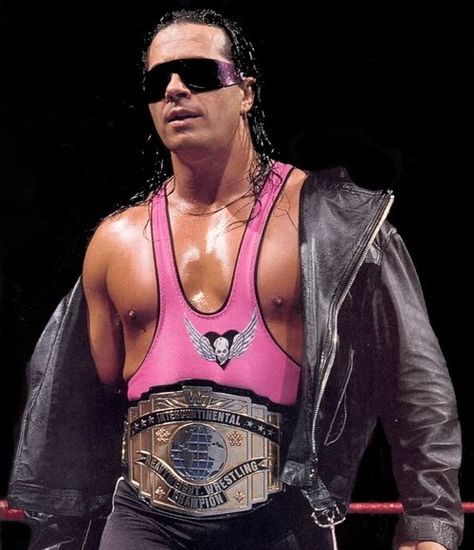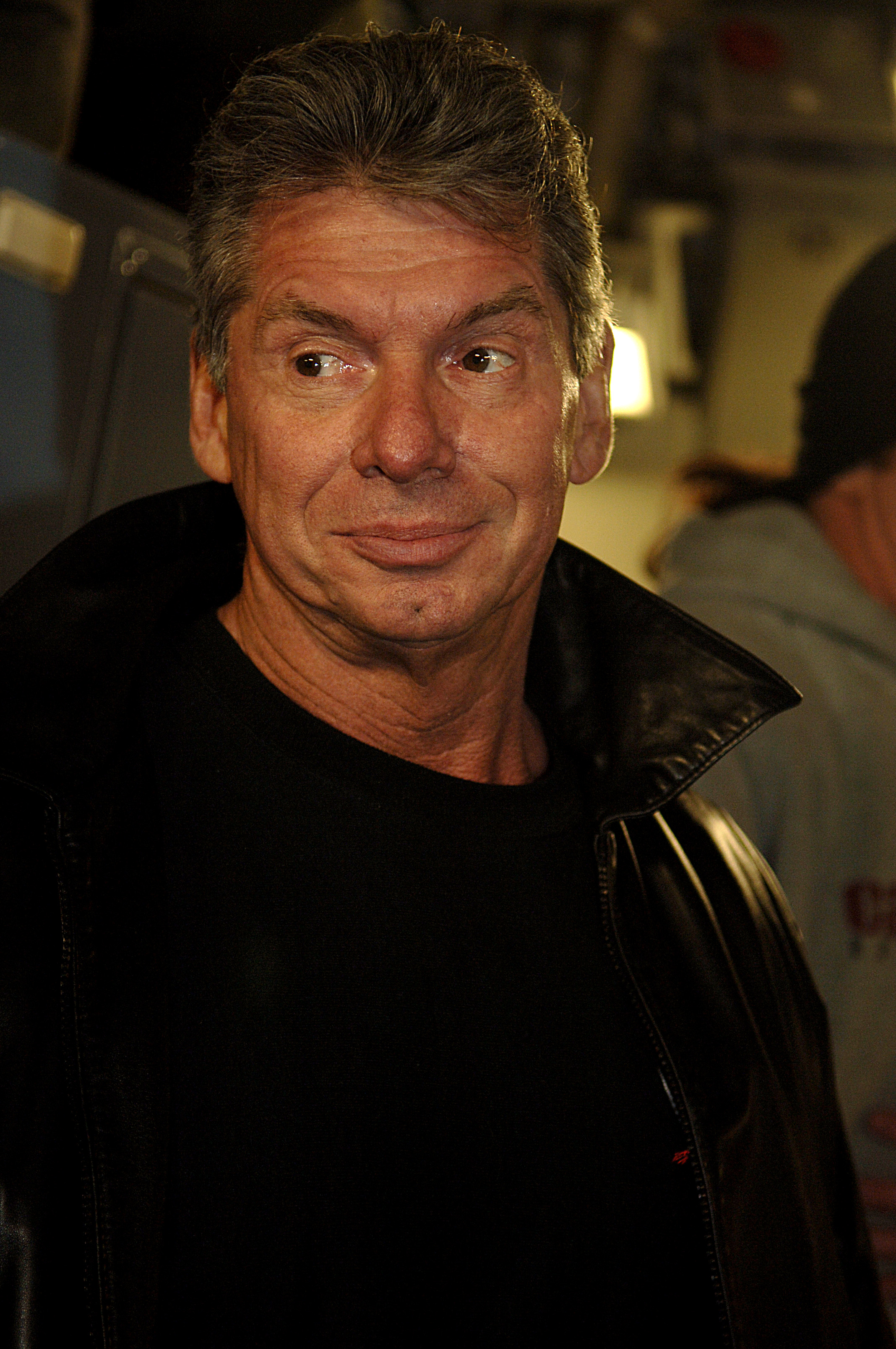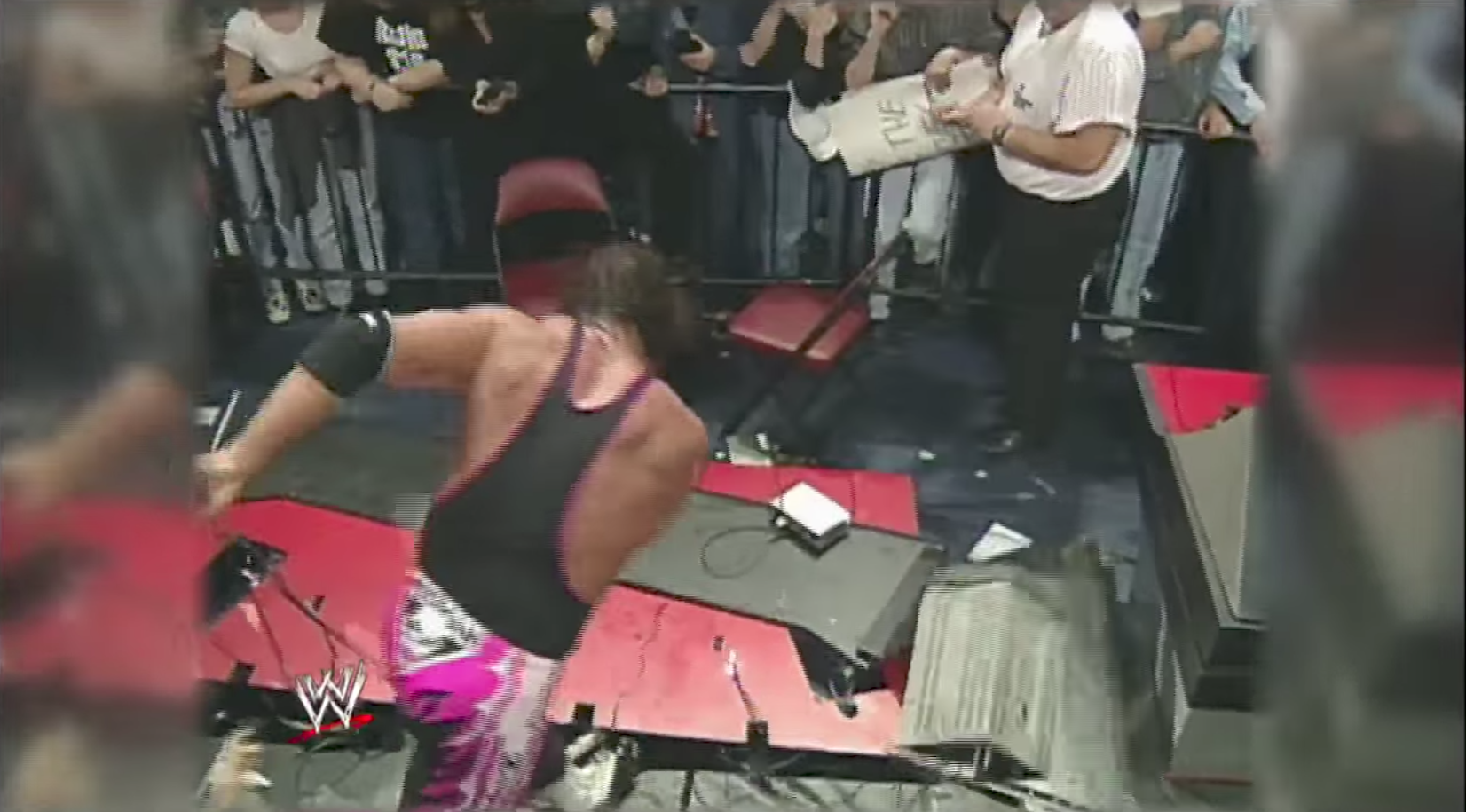We are now officially 20 years past the Montreal Screwjob, perhaps the single most important event in pro-wrestling history.
For those unaware, on Nov. 9, 1997, then World Wrestling Federation Champion Bret Hart was put into his own signature move, the sharpshooter submission hold by Shawn Michaels at the Survivor Series pay-per view in the main event.
He was in the hold for about 10 seconds before referee Earl Hebner signaled the bell to be rung and Michaels was announced as the winner and new champion, despite Hart not submitting to the hold.
Hart was unaware this was going to happen, and was incensed at being “screwed.” The man who had forced the timekeeper to prematurely ring the bell was WWF owner and Chairman Vincent Kennedy McMahon, in a desperate bid to keep his title in his company.
This week’s articles will take a look at the players involved in the screwjob, how it happened and the legacy that this event left in the wrestling world.
The Players
Bret “Hitman” Hart
Bret Hart was a multi-time champion and one of the consistent and most trusted talents in the WWF. He worked there for 14 years and took the face of the company role after Hulk Hogan left the WWF in 1993.
Hart was a multiple time world champion and a huge star in the U.S. but was even more beloved in his home country of Canada. In the context of WWF programing, he was a hated bad guy who trash talked the U.S. while being a good guy to fans outside the country.
The year prior Hart signed a new deal with the WWF for an unprecedented 20 years. During the negotiations of the deal World Championship Wrestling, (WCW) WWF’s rival company, was giving him a very generous offer that was turned down out of loyalty.
Then in the fall of 1997 McMahon told Hart to take the WCW deal, as he could not afford to pay Hart his promised amount. Hart also was becoming disenfranchised with the direction the WWF and his career were going in.
This was the dawn of the WWF “Attitude Era,” a time where raunchy storylines filled with sexual innuendos, strong profanity and unparalleled violence were running rampant, and Hart wanted nothing to do with it.
He signed his deal on Nov. 1 and would begin duties at WCW starting Dec. 5.
He won his fifth and final WWF championship at the Summerslam 1997 pay-per view on Aug. 3 by beating The Undertaker. From that point on he wrestled various fan favorites such as The Patriot that attempted to defend the honor of the U.S.
Hart then prepared for the headlining match for Survivor Series against his longtime rival in the ring as well as in real life, Shawn Michaels.
“The Heartbreak Kid” Shawn Michaels
Shawn Michaels was one of the most gifted and athletic performers in wrestling in 1997.
However, a difficult personality amplified by drug and alcohol addictions made him incredibly hard to work with during this time. He was resented by most of the locker room and was abrasive to most of his fellow wrestlers.
His only confidants were his friends Triple H and Chyna who were aligned with him as members of the stable Degeneration-X.
He also had the boss Vince McMahon in his back pocket. Michaels was one of McMahon’s hand picked guys to lead the company into the future, and was allowed to get away with a lot of outside the ring antics.
He especially didn’t like Hart, as he thought he was too much of a fan of himself. The two had come to blows previously over remarks made by Michaels about Hart’s alleged affair with wrestler Sunny in May 1997.
Animosity had built between the two since then, and it boiled to a head at the pay-per view. Shawn’s actions at the 1997 Survivor Series would haunt him for the rest of his career.
Vincent Kennedy McMahon
Vince McMahon has been the owner and CEO of the WWE since the early 1980s. Throughout the 80s he had bought out many of the small wrestling territories throughout the U.S. and broadcasted WWF programing nationwide, an unprecedented practice before then.
McMahon engineered the “Rock and Wrestling” boom which included MTV and the WWF working together and broadcasting programs. He was the driving force behind making Hulk Hogan a household name.
The WWF was a money-making machine until Hogan left. He jumped ship to WCW and that, along with the beginning of the New World Order (NWO) storyline in 1996 negatively impacted the WWF’s business.
McMahon struggled, and put all his efforts into Bret Hart after Hogan’s departure. Hart became the top guy from 1994 to 1996. Then Shawn Michaels got an opportunity by beating Hart in the first ever Iron Man match at Wrestlemania 12.
A moment that affected McMahon was during Dec. 1996, where his then-women’s champion Madusa jumped to WCW and threw the WWF Women’s Championship in the trash during live TV. It was a moment that shocked and hurt him, and he vowed to never let it happen again.
That moment influenced his decision to screw Hart out of the title, regardless of Hart’s insistence that he would never let it happen.
In addition to owning and overseeing every aspect of the company, McMahon had a role as the lead commentator calling the matches from 1971 to 1997. He did not announce during the Survivor Series pay-per view, as he was planning and executing the screwjob at ringside.
This incident would cause McMahon to become an on-screen character, and he became a tyrannical evil boss. This has now become one of many wrestling stereotypes. His on-screen persona was created by the after effects of the Montreal Screwjob.
Triple H
Triple H was one of the few friends of Shawn Michaels and was he stablemate in Degeneration X. Triple H wasn’t a main eventer at the point of the screwjob yet, but was seen as a star on the rise.
He had just gotten out of a feud with Mick Foley, and became Michael’s manager, accompanying him to his matches and helping him win.
Behind the scenes, Triple H was becoming close to McMahon and was considered part of his inner-circle. Certain reports accuse him of coming up with the screwjob plan.
He was one of the members of the McMahon camp at ringside during the match, and worked damage control when all hell broke loose.
Triple H continued with DX after the controversy, and went on to have a memorable career in his own right.
Earl Hebner
 Earl Hebner was the referee of the match. He was a senior official that had been with the company for decades and was a close friend of Hart.
Earl Hebner was the referee of the match. He was a senior official that had been with the company for decades and was a close friend of Hart.
One of the reasons Hart agreed to do the match and let his guard down was because of his relationship to Hebner. He had no doubts that Hebner would do him right and wouldn’t ever betray his trust.
While there are many conflicting stories on exactly when Hebner learned of the screwjob, with him saying he was informed right before the match, as soon as he signaled for the bell to ring he ran out of the arena into a car waiting to take him out of the arena.
Hebner’s betrayal hurt Hart deeply and it took a long time for the hatchet to be buried between the two. Hebner reffed in the WWE for another decade before being fired and heading to Total Nonstop Action (TNA) in 2006.
The Montreal Screwjob would follow him and be mentioned during matches he officiated for the rest of his career.
The Match

The actual match that took place was nothing special. The two fought all over the ringside area for about 10 minutes. There were some weapon spots and some fighting in the stands. Then the two get back and in the ring and go back in forth for another five minutes.
Then, Michaels puts Hart in the sharpshooter, and McMahon barks at the timekeeper to ring the bell. Hebner high tails it, Michaels takes the title and runs off as well with Triple H and Co, and Hart is left in the ring, bewildered and realizing that he was screwed.
He was visibly frustrated, and signed the letters “WCW” in the air, signaling his departure. He then spat on McMahon as he walked away from the ring. He finally snapped, and tore apart the announce tables and position. At this point, everyone knew this wasn’t part of the show.
The show ends after this, but the story of the Montreal Screwjob is far from over.
Keep your eyes peeled for part two of this reflection on the Montreal Screwjob, as I’ll take a look at the legacy of the incident and the effects it put on the wrestling business as a whole.
We’ll look at the things that came about from it such as the Mr. McMahon character being born, the rise of “Stone Cold” Steve Austin, the Attitude Era going into full swing, the complete fall of Hart’s career in WCW and the many different times WWE and other wrestling companies tried to recreate the screwjob.
Henry Wolski
Executive Editor


